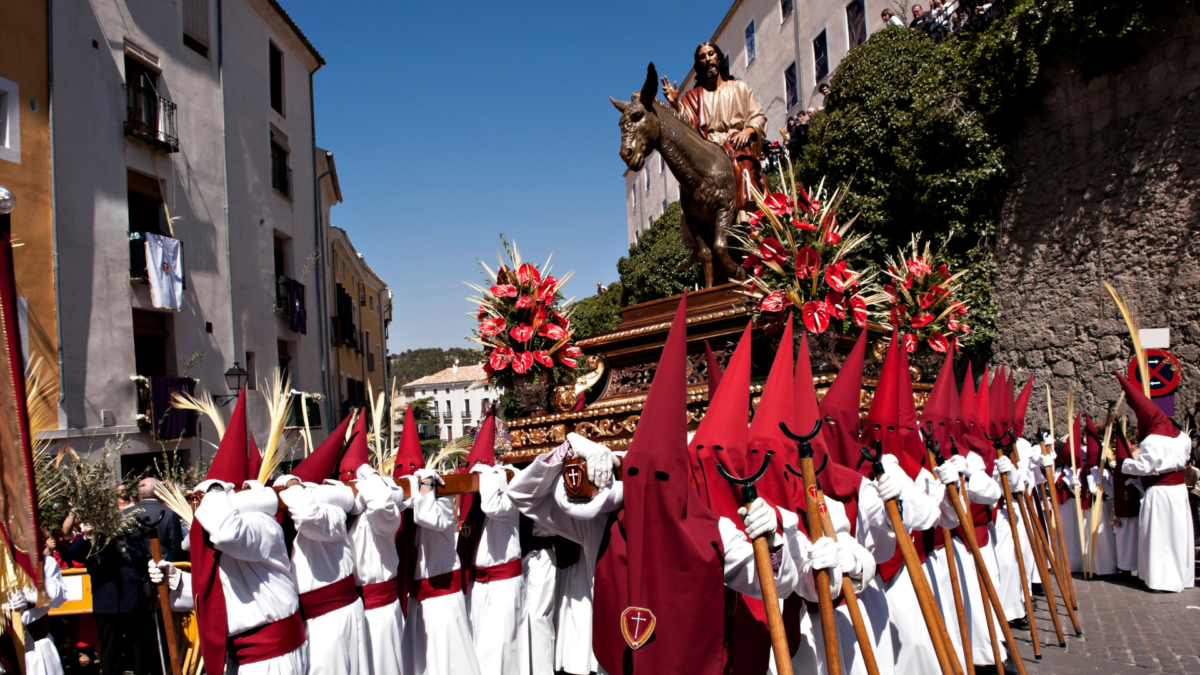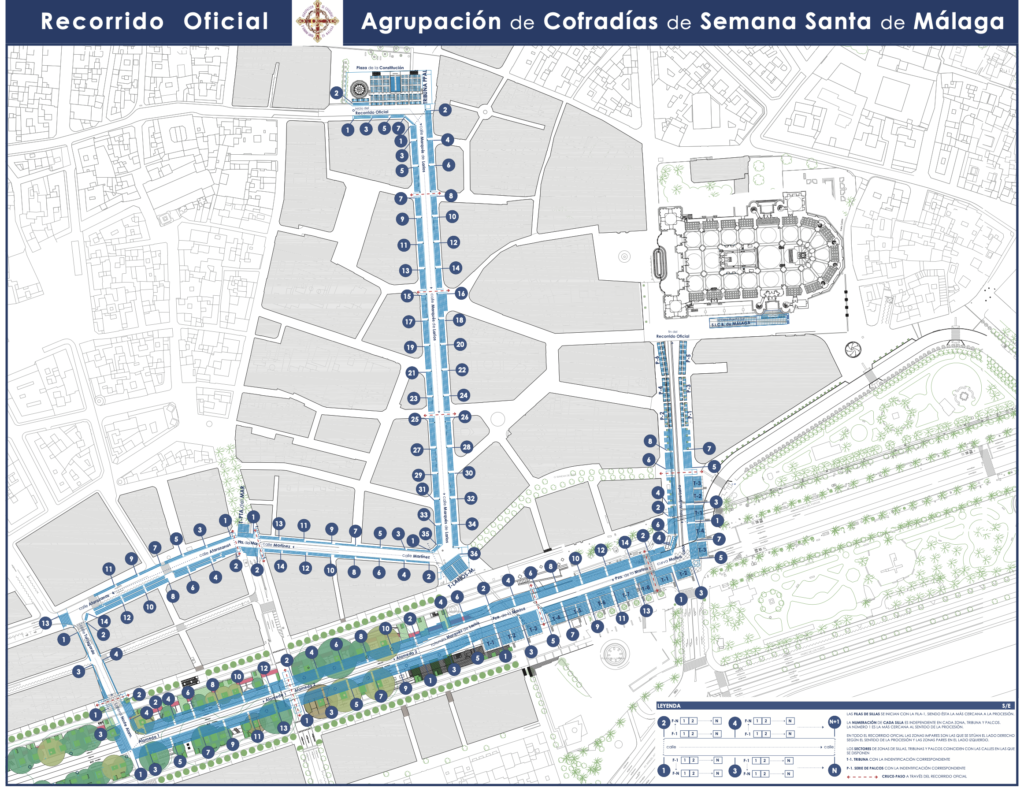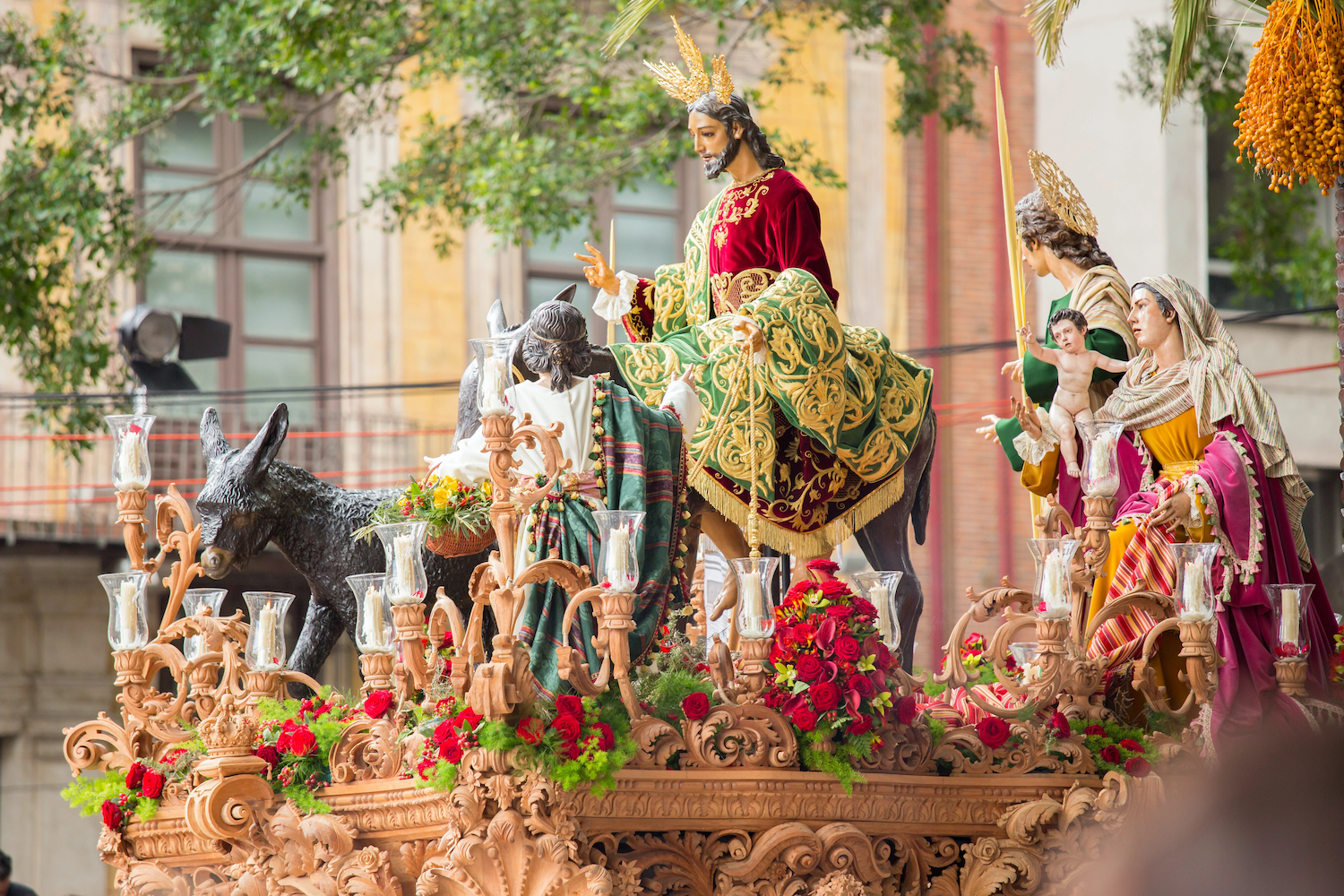The capital of Andalusia, Seville, known as the Marian city, is world-famous for its special Easter celebrations – known in Spain as Semana Santa. These attract tens of thousands of tourists from all over the world to Andalusia every year.
Cofradías, or brotherhood
The tradition of organising daily processions as part of Semana Santa in Seville dates back to the 16th century, when Cardinal Fernando Niño de Guevara ordered local cofradías to prepare an estación de penitencia, or penitential procession, in the local cathedral to celebrate Easter.
Wondering what cofradías are? They are local associations of the faithful (lay people and clergy) whose aim is to nurture Catholic traditions in society and develop religious worship. In many cases, membership of these confraternities is an integral part of family traditions, passed on to the next generation. The confraternities are responsible for organising the celebration of many religious festivals, but they are generally remembered most for their preparations for the Semana Santa celebrations.
Each confraternity is responsible for different tasks on a particular day leading up to the Easter celebrations. The enormous momentum of the processions that pass through the streets of the city, and the fact that they take place throughout Holy Week, requires a commitment long before the festivities arrive. During Lent, they carefully prepare the route of the processions, as well as tending to the statues and building the platforms that will take part in the processions.

Preparations for the procession
Nazarenos are divided into three groups – with candles, with insignia and with a cross. The most distinctive insignias include the cruz de guía (guiding cross), the banderas de pasos (flags), and the estandartes marianos (Marian banners). It is the Nazarenes who are the most distinctive group of all those walking in the procession (with the exception of the priests). This is due to their original dress – they wear long robes and the so-called capirote, a mask with a pointed cap that effectively covers the face. It has a penitential character, and the full covering of the face makes it impossible for those watching the procession to see who is walking in it.
The so-called costaleros, who belong to the various brotherhoods, also play an important role in the whole event. They carry on their shoulders the paso, a huge construction consisting of an ornamental platform with figures representing a holy figure or a biblical scene. Another important element of each procession are the so-called acolytes, or people whose role is to assist the priests. During the procession, they carry lighted candlesticks, which they raise during the march and lower when the cordon stops. Some of them also carry the incense that is characteristic of Catholic rites. Meanwhile, in front of them and in front of the paso are the so-called pertigueros – people holding a silver staff or stick with which they give instructions to the acolytes.

Celebrations in Seville
The inhabitants of the capital of Andalusia begin their Semana Santa celebrations on Viernes de Dolores, the Friday before Palm Sunday – this year it will be exactly 11 April. An important part of the celebrations is the estación de penitencia, which the brotherhoods are responsible for organising: Pino Montano (named after one of the neighbourhoods), Pasión y Muerte (Passion and Death), Cristo de la Corona (Christ from the Crown). These are processions whose participants visit at least one shrine during the march.
To celebrate this day, the faithful from the different neighbourhoods follow marked routes and arrive back at the starting point – in this aspect, it is no different from the processions we know from Poland. However, each of the processions taking place in Seville differs in important details, e.g. in the Pino Montano neighbourhood, the inhabitants follow the statues of Jesus of Nazareth and Our Lady of Love in the procession, while in the Triana neighbourhood, the Pasión y Muerte confraternity walks out with the figure of Christ crucified and then arrives at the Church of St Anne. And from the local cathedral comes the Cristo de la Corona confraternity, which carries a 16th-century statue of Christ with a crown of thorns through the centre of Seville.
The following day, Andalusians celebrate Sabado de Pasión (Passion Saturday). On the streets of Seville then you can see the so-called Cruz de Guía – a crucifix carried by one of the brothers at the head of the procession. The first musical bands with trumpets and drums then appear. The people of Andalusia also participate in the Palm Sunday celebrations, commemorating Jesus’ entry into Jerusalem.
The Semana Santa programme also provides for processions on every day of the week, starting with Lunes Santo (Holy Monday). Processions can start in the afternoon and end even a few hours after midnight the following day. On Good Friday (called Viernes Santo in Spain), with the rising of the sun, Spaniards begin to remember the Passion of Christ. The Macarena Confraternity leaves the Basilica of La Macarena at dawn with a figure of Our Lady of Hope and a baroque statue of Señor de la Sentencia (Lord Jesus of the Judgement), depicting Christ shackled.
On Easter Sunday itself(Domingo de Resurreción), processions also take place during the day. At dawn, the Resurrección confraternity leaves the church of Santa Marina carrying the statue of the Risen Lord Jesus and a canopy under which is the Virgen de la Aurora (Our Lady of the Dawn). The whole procession can be admired from the side sectors, where there are, among other things, seats, which are almost impossible to get without the right connections, for example among the members of the various confraternities responsible for organising the march.
On Easter Monday, the vast majority of towns and cities no longer show signs of the celebrations of the Holy Week. Life returns to normal, cars and buses running like any other day return to the city streets and colourful flamenco costumes begin to reign in the shop windows. This is all due to the Feria de Abril – the flamenco festival that begins after the Easter celebrations.
More information:
Semana Santa, or Holy Week in Spain
What’s there to see when visiting Malaga during Holy Week? [SCHEDULE]
Semana Santa in Andalusia
Other cities in Andalusia also solemnly celebrate both Semana Santa and Easter. As in Seville, the brotherhoods are also responsible for the organisation. In the city of Huelva, Palm Sunday is an important highlight. On Holy Wednesday, attention is given to Marian devotion. On this day, Spaniards pray for Vírgen de la Victoria, Vírgen de la Esperanza (Our Lady of Victory and Hope).
In the city of Jaén, a solemn procession takes place on Good Friday. A statue of Nuestro Padre Jesús Nazareno (Our Father Jesus Nazareno) with a long maroon robe, a cross and a crown of thorns appears in the streets. In Andalusia’s second largest city, Málaga, traditional processions with so-called tronos (another term for pasos) are popular. These are huge platforms on which statues of saints are placed. In this regard, Malaga boasts a trono with a figure of Jesus on a donkey, which is carried on Palm Sunday during the so-called Pollinica procession (named after the donkey – pollino).
Processions in Malaga
Malaga is distinguished by another element not seen in other cities, namely the rosemary carpets on the streets where the processions pass. In addition, on Good Friday the city switches off the street lighting so that its residents can admire the glow of the candles carried in the procession. Málaga’s Holy Week processions have been organised for 500 years, making them as unique as those held in Seville.
Naturally, processions take place in most Andalusian cities, regardless of their size or importance to the region. If we don’t make it to Seville or Málaga, we can be sure that on the Costa del Sol between 13 and 20 April, we will definitely have the opportunity to see the Semana Santa celebrations live.
Spain catches the eye of the world
Semana Santa, or Holy Week, is so popular in Andalusia that hotel bookings need to be made… six months in advance. Room prices are of course higher during this time. It is not only tourists who head to the coast in large numbers – Spaniards themselves are keen to visit the south of the country at this time.
It’s best to have friends in Seville – the first most besieged city during Semana Santa. If any of your relatives belong to a fraternity, you can even dream of a seat along the procession route. The more wealthy and distinguished citizens have purchased seats in the grandstands, known as Los Palcos.

